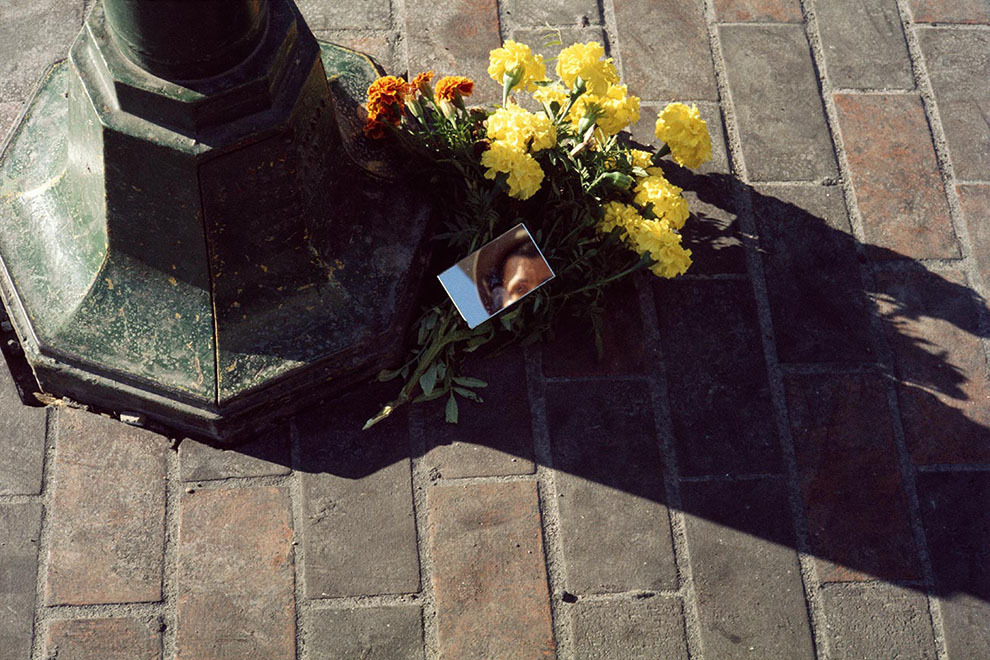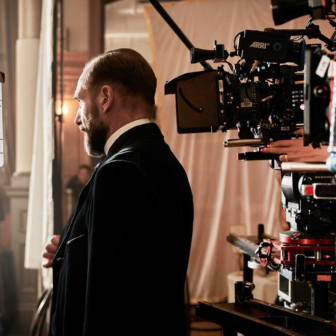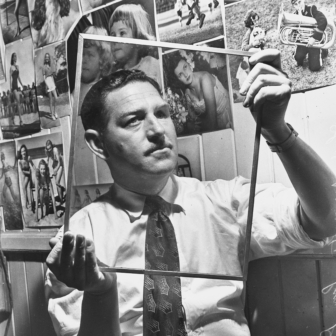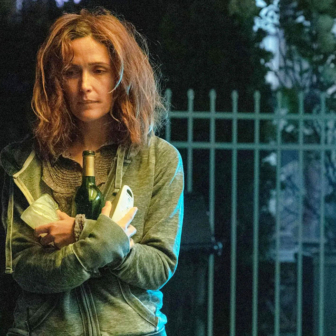The circulation of a documentary like Particle Fever is possible only because our curiosity about the wonders of scientific discovery runs well beyond the ordinary viewer’s ability to understand what she’s looking at. We know that there’s a huge circular tunnel, the Large Hadron Collider, at CERN, the European Centre for Nuclear Research, under the ground on the border between France and Switzerland, and that it was built to pursue answers to major questions posed by physicists. We’re told that the goal here is a special particle that may explain matter itself, the Higgs boson, which was initially theorised by a senior physicist, Peter Higgs – he is an endearing elderly presence in the audience when the finding is announced. This is almost unimaginable: a reality that is infinitesimally small.
We can follow the interactions of a group of scientists, Italian, American, Turkish, Iranian; we take in their talk around the water-cooler and coffee machine. Some have refugee histories, some did many other things before choosing this career; the brightly elegant Fabiola Gianotti, who will take over as head of CERN from 2016, once began to be a ballet dancer. The other woman in the central group, the younger Monica Dunford, is the most absurdly healthy screen presence you could imagine; when not in the main workplace, she is bicycling furiously or pounding the treadmill in the gym. Gaining virtual knowledge of them, we can still know little of the processes they are setting off, nor can we imagine what it means to talk of mass in sub-atomic entities. The images of the great ATLAS detector show us something of the actual machinery of discovery; the visible complexity is a marvel, stirring memories of old future-fantasies, the dreams of H.G. Wells and Jules Verne. But we can get very little idea of how it works, and the film would have gained from some attention to engineers and technicians alongside the scientists.
All we can do is go with the flow. The film was co-produced by David Kaplan and Mark Levinson, both physicists, and directed by Levinson; they, with cinematographers Wolfgang Held and Claudia Raschke, and editor Walter Murch, turn the pursuit into intelligent entertainment. The film’s own daring resounds with that of the scientists’ project; Kaplan said, “You have to ignore how irrational it is to think that you make a documentary film about science when you have no idea what the ending is going to be, and you just plunge ahead and believe that at some point you’re going to get a compelling story out of it.” The compulsion is in the quest, and in the palpable shared obsession. At the point of arrival, the film-makers are saying that with the crucial particle identified, these scientists have gained the top of the mountain; and here they call in Beethoven, with the climactic passage from the Ninth. Some viewers found this quite offensive; I’d call it a bit of overly triumphalist excess. While the Collider itself is international and European, this film is American – profoundly so: a romantic affirmation of exploration as a major human right.
The part that matters comes a bit further on, when lines of speculation are explained. There’s some play with opposing views of the universe: “supersymmetry” (yes, there is something out there that loves us) versus the sprawling multiverse (no, there isn’t; there’s only indefinite, formless chaos). Along lines of connection that only these master-physicists understand, the determination on the mass of the Higgs boson will point us one way or the other. The needle settles in the middle. The implications, so far as they are explicable, will give comfort neither to believers, nor to such fiercely devout atheists as Richard Dawkins; but the confirmed agnostics, those who can believe only in deep uncertainty, may find it an intellectually satisfying outcome.
There are numerous explanations for the general superiority of New Zealand’s film-making over Australia’s. My own preferred theory is that their film-makers are blessed with better confidence than ours have in their home audience; they’re not looking sideways towards Hollywood, or away toward the sensitive European art film. Another part of it is the strength of the Maori presence, something the film industry inherits: you can go back, if you want, to the Treaty of Waitangi, and ask what kind of difference such a treaty (long called-for, delayed and therefore denied) might have made to Australian filmic storytelling. (Consider: if some Aboriginal directors – Ivan Sen, Warwick Thornton, Beck Cole – make stronger films than most, this could be because they’ve got better stories to tell, and a greater need to tell them.)
The questions are provoked again by The Dark Horse, a close-to-true story written and directed by James Napier Robertson about the troubled life and work of Genesis (Gen) Potini, played superbly by Cliff Curtis. Gen, diffident and incurably bipolar, is fatally at odds with the masculine Maori world of the small town where, stumbling around in search of a track for his life, he spends time in residential care. Emerging from the institution, he finds someone he wants to look after, his unhappy adolescent nephew Mana (James Rolleston, who had the central role in Taika Waititi’s splendid Boy in 2010). Mana, like others in his age group – both boys and girls – around the small town of Gisborne, is adrift; he is also threatened. The big tattooed bullies of his hapless father’s gang want to induct him into their version of manhood, a culture of violent bikie rebellion.
In thrashing rain, Gen sleeps under a sheet of plastic on the ledge of a monument. He wanders at night, compulsively muttering to himself; he’s an overweight shambles, his front teeth knocked out. There are theories about mental instability and skill at chess, but if they come into play here, it’s not to offer solutions. Despite his own homelessness, Gen manages to pull the kids together into a determined chess group. From the fast montage of the ensuing games, you could learn little more about chess than you might about advanced physics from Particle Fever; no matter, what we do know is that the tournament becomes a stiff contest of Gen’s young Eastern Knights against privileged young pakeha teams from well-resourced private schools. There’s grist here for your class antipathies; but think longer about the centre of the story, and the stark pain enacted by Wayne Hapi as Mana’s father Ariki. His ways of looking are enough to communicate the sadness of an adult male caught between the claims of his fatherhood and the need for approval from his own cohort. The gender issues are half-submerged; alongside Ariki, the women are marginal but vivid presences as teachers and mothers, and the girls are bouncing around, defiantly holding their own among the chess players. The issues are powerfully unstated; what matters is the conflict over what it can mean, in that world, to become a man.
The Dark Horse has won several well-deserved awards in New Zealand – best film, best direction and screenplay, best actor and supporting actor, best score for Dana Lund. Find it if you can; the dawn of Christmas means the silly season on the cinema circuits – “it’s a positive desert!” cried one cinephile friend. “There’s absolutely nothing to look at.” True, but not for long. Finding Vivian Maier should also be sought, a beautiful, complex, meandering work which, more darkly than Bill Cunningham New York, brings photography and cinema together. Co-directed by John Maloof with Charlie Siskel, the film is the story of Maloof’s own obsession; he made the recovery of Vivian Maier’s vast archive of great city photographs, and that of her own story so far as it can be known, his project. She lived from 1926 to 2009, working as a servant, a carer for children and the aged, and taking photographs in her time off with a Rolleiflex, always held waist-high. As she looked at her subjects from above the camera, she could meet their gaze, and the results are utterly remarkable. She left images of children, strays and layabouts, of anger, resentment, rock-bottom poverty, and their vitality is in the way they return the gaze and look back at us through her.
Maloof says that some of the art establishment still ignores her, but for others she is named along with Cartier-Bresson and Diane Arbus. If she really wanted to remain unknown, she has failed in the end, not only because the photographs communicate her great skill in perception, but also because there are so many of the worker herself – self-portraits, using mirrors and other reflective surfaces – in the 1950s and 60s; she is still young, clear-eyed, determinedly isolated, and manifestly lacking in the kind of feminine vanity taken in those years to be proper and normal. Then there’s the darker thread; the witnesses – mostly her long-past employers and charges – come out with their memories of her savage and punitive moments; and there are the French connections, offering other insights altogether. It’s clear that it’s the work, the enormous load of it, that has its claims, not the fragmentary and undramatic biography. There Maier, perversely as you like, sets her own heavy question-mark against our period’s major cultural obsession: the tireless burrowing into authorship, the relentless probing of love lives and pathologies. Curiosity granted, we could do with a great deal less of it.
Finally for Christmas, a salute to those valued confrères who have left the televisual scene. No matter how often I and others might have disagreed with Margaret or with David, or with both, their responses have been at all times worth having. I have regretted that they didn’t make more room for documentary, but then the program has always threatened to burst at the seams with filmic variety; the lineup of classics has been marvellous. The two have done everything to build and sustain a general consciousness of cinema as a vast array of works worth taking seriously, worth maintaining as a local industry and local culture, and always worth arguing over. That said, they’ve been great TV as well (though I have at times wanted to say: please David, that tie should be taken out and shot). I hope Margaret gets to keep all those fabulous little numbers, and the shoes. The dynamics were terrific, she with her passionate enthusiasms and great humour, he with his unfailing, gentlemanly liberalism and encyclopaedic knowledge. They’re irreplaceable. •





